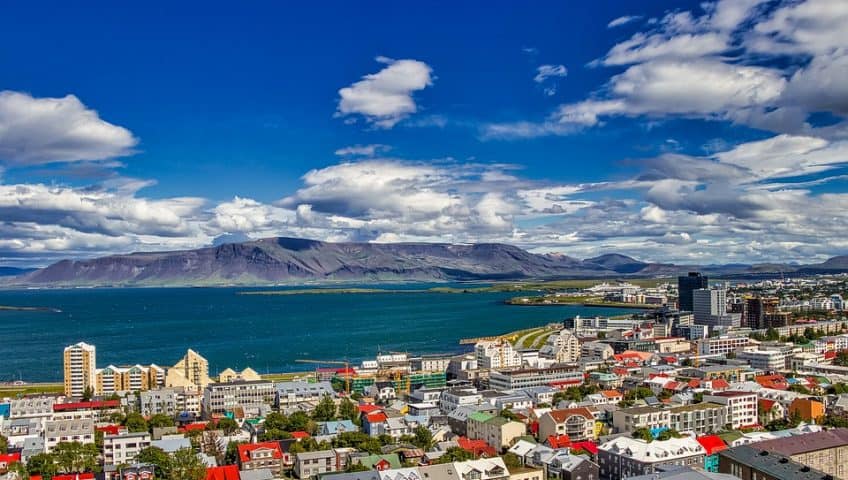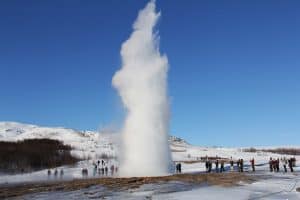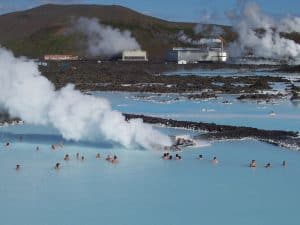
Sustainability Priorities of Reykjavik
As cities try to reduce their carbon footprint worldwide, Reykjavik continues to set a leading example for what it means to be a green world city - particularly with regard to renewable energy.
Green City Times has identified several of the sustainability solutions implemented by the city of Reykjavik, Iceland.
It is important to note that almost all countries around the world have at least a couple of sources of readily available renewable energy from the natural resources that are present in their specific region - be that solar, wind, hydroelectric, biomass, and/ or geothermal.

It must also be noted that Iceland has plentiful natural geothermal and hydroelectric resources; much more than most other countries worldwide.
Iceland is home to glaciers, glacial rivers, hot springs, geysers, volcanoes (mostly dormant, and some active), and underwater volcanoes. This region of the mid-Atlantic ridge has frequent active seismic activity to this day.
These natural resources become sources of geothermal and hydroelectric energy for the country.
The volcanic geothermal sources, and other sources of heat and steam, are created from widespread underground thermal and seismic activity throughout Iceland. Icelandic volcanoes produce magma, which heats rocks, other subterranean formations, and underground aquifers. This hot water from underground aquifers is then released through hot springs, geysers, steam vents, underwater hydrothermal vents, and mud pots.
This does present Reykjavik with unique opportunities to create renewable energy from the abundant natural geothermal, as well as the hydroelectric, resources in, and surrounding, Iceland.
Today, around 73% of electricity in Iceland is produced by hydroelectricity and around 27% is from geothermal energy. Around 90% of heating for buildings in Iceland is from geothermal energy (in the form of geothermal district heating).
Please also see:
Geothermal District Heating in Iceland

Here are the Green City Solutions Reykjavik best exemplifies:
- - Renewable Energy - Reykjavik produces enough renewable energy to supply power to all of the residents of the city in a clean, environmentally friendly, and cost-effective manner.
- - Hydropower is prominent in Reykjavik's energy mix (mostly sourced from hydroelectric dams built on glacial rivers), and the rest of Reykjavik's electricity is sourced from geothermal power plants.
- - Most of the renewable energy for heating buildings produced in Reykjavik is geothermal energy.
- - Renewable energy production also presents a great boost to the local economy of Reykjavik.
- - A Sustainability Municipal Plan; including environmental conservation and a land-use plan; prioritizing green spaces and sustainable public transit. The City of Reykjavik has developed a Municipal Plan for sustainable development to 2030. The Reykjavik Municipal Plan 2010-2030 includes a Sustainable Planning Policy, a plan to maintain Reykjavik as an internationally leading green city, details for the Planning of City Districts, a Neighborhood Plan, and an Environmental Impact Assessment.
- - Implementation of a climate action plan to reduce GHGs citywide, and a strategy for further development of green building and sustainable public transit, are also in Reykjavik’s Municipal Plan.
The following quote is from an article about Reykjavik's Municipal Plan published by Reuters:
"The Icelandic capital of Reykjavik is aiming to become carbon neutral by 2040 by imposing strict limits on urban sprawl and improving the efficiency of public transport, according to [the Reykjavik City Municipal Plan] unveiled by the city’s mayor.
The plan includes several measures to achieve the target, with promises to mandate the green emphasis in all of the city’s operations. For example, one goal is to ensure all vehicles in the City of Reykjavik are powered by green energy by 2040, including both public and private transportation.
The city’s public transport system stands in line for significant restructuring in order to increase the number of people using it to 12 percent from four percent by 2030."
[quote from - reuters.com/iceland-capital-carbon/reykjavik-unveils-plan-to-become-carbon-neutral-by-2040]
Click here>>> For the full Reykjavik Municipal Plan
- - Renewable Energy RD&D - Reykjavik is a global center for renewable energy research through programs like the GREEN program and Reykjavik is the world's best example of research, development & deployment (RD&D) of renewable energy generation and its uses. Chief among the innovative uses of renewable energy that Reykjavik represents is providing geothermal district heating for the city. Reykjavik is also home to the Iceland School of Energy, offering a Masters of Science in Sustainable Energy; where students visit renewable energy facilities as part of the curriculum.
Much of the reason that Iceland leads the world in renewable energy and geothermal heating is due to renewable energy sourced from the unique topography of the country. Iceland has abundant natural geothermal resources such as (around 600) hot springs, geysers, and other geothermal hot water sources generated by geothermal heat from (mostly dormant) volcanoes.
